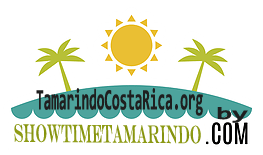Parque Nacional Marino Las Baulas
You'll find something to love in Costa Rica
Parque Nacional Marino Las Baulas,
Playa Grande, Costa Rica
Leatherback Turtles and Costa Rica’s Parque Nacional Marino Las Baulas, the stunning beach of Playa Grande with its pristine shoreline and clear blue sea, is one of the ancient Leatherback Turtles egg laying beaches on the Guanacaste coast.
Lying in the North Pacific Coast in Guanacaste province, Playa Grande is home to the endangered Leatherback Turtles that come ashore every year to lay their eggs on the beach during November to April, professional guided nightly eco tours can be arranged.
Marino las Baulas de Guanacaste National Park is another of Costa Rica’s important sea turtle nesting sites. Located on Costa Rica’s Guanacaste Pacific Coast north of Tamarindo.
Created in 1990, this national park was created in order to protect the endangered Leatherback turtles, which come every year to nest on the shores of the beautiful Playa Grande.
Encompassing an area of roughly 445 hectares of mangrove swamps and coastline, the Parque Nacional Marino Las Baulas is made up of the four beaches, Playa Grande, Playa Langosta, Playa Ventanas and Playa Carbon.
The two mangrove estuaries in the park are the Estero de Tamarindo and the Estero de San Francisco, the former of which is the biggest mangrove estuary in Latin America. This national park on the Guancaste coast of Costa Rica also extends 12 miles off shore as well, to protect the Leahterback Turles from poachers and tourists alike.
The nesting ground for thousands of Leatherback Turtles who make the journey every year to Parque Nacional Marino Las Baulas also protects 174 species of birds and a number of different animals that live in the estuaries here, on Guanacaste Beaches, Playa Grande.
The largest marine reptiles in the world, the Leatherback Turtles or Baulas as they are known in Spanish, come here in huge numbers during the months of November to April to mate and lay their eggs.
To get to Parque Nacional Marino Las Baulas, you can fly into the Liberia International Airport and then drive west toward the town of Tamarindo; from here, you need to go north to Playa Grande. Another way of reaching this national park is by boat across the Estero de Tamarindo.
Getting Up close to the Leatherback Turtles
Eco tours and Leatherback Turtles are of great fascination for us all… the desire to watch them up close and possibly even touch them seems logical, but it is important that visitors be aware of certain rules and respect of Nature when on a guided eco tour on Playa Grande.
Costa Rica’s beaches host the breeding grounds for several species of sea turtles: Green, Leatherbacks, Carey and Lora which all continue their ancestor’s traditions in returning to the same shores where they were born to lay their eggs.
Sadly, all of these species are now under strong environmental pressure and at a high risk of extinction. As a result, one must be careful while observing their breeding habits and take extreme caution to prevent further negative impact on their survival.
You will have to go on eco tours with professional certified guides to see the turtles, without a guide you will not be allowed on the beach. Parque Nacional Marino Las Baulas is a great place to visit with family, this national park also has a turtle museum and night tours during the turtle nesting season.
The most important precaution when visiting the nesting grounds is to prevent noise and bright lights, which can scare and confuse the turtles, which might cause them to return to the ocean without laying their eggs. The use of “flash” is absolutely prohibited in the nesting area and cars and quads are definitely not allowed on these beaches. Thank goodness!
All the lights used at these locations must be red lights, which the turtles cannot see and therefore will not confuse or disorientate them.
It is also important to walk on the wet parts of the beach, so you will not interfere with the nesting that takes place higher on the dunes or with the exiting of the baby turtles from the nests.
Observation of this process must take place behind the turtles, to ensure that we do not obstruct the path between the ocean and the nest. Guides will direct you to keep silent and squat down several meters away to ensure minimal impact. Remember, always go with a qualified guide and follow the rules established by the park.
The following is a list of precautions that must be taken when you’re scuba diving or on the beach near the Leatherback turtles:
1) When scuba diving:
Normally the turtles will come close without fear, but please do not touch or try to clean the algae from their shell.
In fact, the algae you see help them to stave off infection and are very necessary for their well being.
Of course, never grab them or try to ride them, or take a picture with them. Also, one should not position themselves right in front of them as this may interfere with their route or the direction in which they are moving.
2) On the nesting beaches:
The female marine turtles arrive during high tide when the moon is full seeking warm sand to lay their eggs in.
Before they dig their nest, the turtle lays her body over the sand forming a bed and then starts to dig a hole in the sand with her rear fins.
When she finishes the nest, the turtle falls into a “trance like state” and begins to lay her eggs. The eggs are still soft at this point; they fall together with a mucous liquid, which in addition to acting as a lubricant performs an antibacterial and fungicidal role.
Once this is completed, she covers the nest and sometimes walks in circles around it to disguise the prints and diminish the risk from predators. Mother Nature at work!
The best place to observe this awesome work of nature is at one of Costa Rica’s many sheltered areas where the turtles are properly protected and guides are available to teach you to ensure your presence will not negatively impact the species.
Call us at
Partner - ads




 WhatsApp us
WhatsApp us